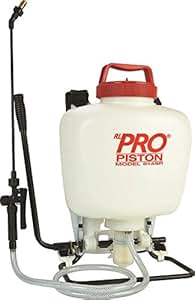Understanding the Power Behind the Spray: Why Torque Matters in Backpack Sprayers

When it comes to backpack sprayers, raw horsepower isn’t everything. While a powerful engine sounds appealing, it’s the engine’s torque that truly dictates how efficiently a Stihl backpack sprayer tackles demanding tasks. Torque, measured in Newton-meters (Nm), represents the rotational force the engine produces. Think of it as the “pulling power” of the engine. High torque means the sprayer can consistently maintain pressure and flow rate, even when facing thick vegetation or challenging terrain. This is crucial for consistent coverage and preventing pump strain or engine overheating, leading to increased sprayer longevity and better application results.
A low-torque engine might struggle to overcome resistance, leading to inconsistent spraying, decreased efficiency, and potential damage to the pump over time. Stihl engineers carefully balance engine power and torque to optimize performance across their sprayer range. The result? Consistent, reliable spraying even under pressure, saving you time and effort.
Stihl Backpack Sprayer Engine Options: A Deep Dive

Stihl offers a variety of backpack sprayers, each powered by a carefully selected engine. While specific models and their corresponding torque figures vary depending on the year and specific model number (always check the manufacturer’s specifications), it’s generally safe to say Stihl prioritizes engines offering strong torque output at lower RPMs. This is ideal for backpack sprayer applications, ensuring a smooth, consistent spray pattern without excessive wear on the components. The most common engine types used in Stihl backpack sprayers usually fall into the 2-stroke category, known for their power-to-weight ratio. However, some models may incorporate different technologies and engine designs to achieve optimal performance and reduced emissions.
Always consult the specific product details on the Stihl website or your local dealer for the exact engine specifications of the model you’re considering. This ensures you get the most accurate information regarding torque, RPM, and power output.
Torque and Towing: The Unspoken Advantage

While not explicitly marketed as a towing feature, the high torque of Stihl backpack sprayers translates into an indirect benefit: enhanced maneuverability. The powerful engine allows for easier navigation through dense undergrowth, uphill slopes, and uneven terrain. This “pulling power” is analogous to the towing capacity of a vehicle; it’s not a direct towing feature, but the underlying strength significantly affects the user experience.
Unlike some competitors that might struggle with thick vegetation, Stihl’s higher torque ensures consistent spraying without frequent stalling or loss of pressure. This ease of use allows for smoother operation, reducing user fatigue and increasing overall spraying efficiency.
Stihl vs. The Competition: A Comparative Look at Efficiency

Comparing Stihl backpack sprayers to competitors requires a nuanced approach. Direct torque comparisons aren’t always readily available from all manufacturers. However, anecdotal evidence and user reviews frequently highlight Stihl’s performance advantages in several key areas. These include:
- Consistent Pressure: Users frequently praise Stihl sprayers for their ability to maintain consistent spray pressure, even during extended use and across varying terrains.
- Reliability: Stihl’s reputation for robust engineering translates to durable sprayers that can withstand harsh conditions.
- Ease of Use: Many users find Stihl sprayers more intuitive and comfortable to operate compared to competitors.
- Longevity: Well-maintained Stihl sprayers often boast a longer lifespan, representing greater value over time.
Remember to always consult independent reviews and compare specific model specifications to make an informed decision based on your individual needs.
Maximizing Your Stihl Backpack Sprayer’s Efficiency: Practical Advice
Even the most efficient sprayer will underperform without proper maintenance and usage. Here are some practical tips to optimize your Stihl backpack sprayer’s efficiency:
- Regular Maintenance: Follow the manufacturer’s recommended maintenance schedule religiously. This includes cleaning, lubrication, and filter replacements.
- Proper Mixture Ratios: Always use the correct mixture ratios of chemicals and water as specified by the product label and your local regulations.
- Optimal Nozzle Selection: Choose the correct nozzle type and size for the task. The wrong nozzle can significantly impact spray pattern and coverage.
- Terrain Awareness: Adjust your pace and spray technique according to the terrain. Uneven surfaces may require more careful maneuvering.
- Fuel Quality: Use high-quality fuel as recommended by Stihl. Poor fuel can negatively impact engine performance and longevity.
By following these guidelines, you can ensure that your Stihl backpack sprayer operates at peak efficiency, saving you time, money, and effort in the long run.
Conclusion: The Stihl Advantage in Backpack Sprayer Technology
Stihl backpack sprayers are known for their reliability, efficiency, and ease of use. The science behind their superior performance lies in the careful engineering of powerful, high-torque engines, robust components, and smart design features. While the exact torque specifications vary by model, Stihl consistently delivers sprayers that provide consistent pressure, reduce user fatigue, and improve the overall efficiency of any spraying job. By understanding the importance of torque, selecting the right model, and following proper maintenance procedures, you can unlock the full potential of your Stihl backpack sprayer and achieve professional-level results.

